You can use the Function Builder to define motor or force profiles from an imported data set. You can also use the Function Builder to define a motor or force profile from a mathematical expression or from interpolated functions along connected segments.
For motor profiles, you can specify time, cycle angle, or any result as the independent variable.
To open the Function Builder:
- From a motion study, click Motor
 (MotionManager toolbar).
(MotionManager toolbar).
- Iin the PropertyManager, for Motor Type, click one of the following:
- Segments. Defines profile from piecewise continuous functions of time or cycle angle.
- Data Points. Defines profile from an interpolated data set as a function of time, cycle angle, or motion study results.
- Expression. Defines profile as mathematical expression of time, cycle angle, or motion study results.
You can also access the Function Builder from the Force PropertyManager.
Some Function Builder options are not available for Animation or Basic Motion study types.
General

|
Save As |
Exports the function definition as an .sldfnc file.
|
 |
Open |
Imports a custom function from an .sldfnc file.
|
| |
OK |
- Closes the Function Builder.
- Assigns the function name to the function displayed in the Function Builder.
- Displays the function name in the PropertyManager.
|
| |
Show Graphs |
Displays up to four selected graphs: - Displacement
- Velocity
- Acceleration
- Jerk, the derivative of acceleration
When displaying multiple graphs, you can double-click a graph to expand it, hiding the other graphs. Double-click the single graph to return to the multiple-graph display.
|
 |
Select |
As you move your pointer over the graph, displays a set of perpendicular lines and the graph value where the graph intersects the lines.
 Select a plot to move the selection and zoom controls to the plot.
|
 |
Zoom to Area |
Select a plot to move the selection and zoom controls to the plot.
|
 |
Zoom to Fit |
Select a plot to move the selection and zoom controls to the plot.
|
| |
Fit All Graphs |
Scales plots as necessary to display all graphed functions.
|
| |
Make function available for use elsewhere in this document
|
Permits the use of this function to define other profiles in this motion study. The name you assign to this function appears as a profile type in the PropertyManager.
You cannot assign named motor profiles to forces or vice versa.
|
| |
Name |
Specifies the function name. This name appears in the PropertyManager.
|
Segments
Defines profile from piecewise continuous functions of time or cycle angle.
| |
Value (Y) |
Specifies the function dependent variable: - Displacement
- Velocity
- Acceleration
|
| |
Independent variable (X) |
Specifies the independent variable:
|
| |
Click to add row |
Adds a row for a new segment. |
| |
Start X |
Specifies the independent variable at the start point of a segment. |
| |
End X |
Specifies the independent variable at the end point of a segment. The value of End X in a row defines the Start X value for the next row.
|
| |
Value |
Specifies the function value at the end point of a segment. |
| |
Segment Type |
Specifies the function profile for the segment:
|
Cubic
|
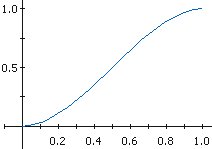
|
|
Quarter Sine
|
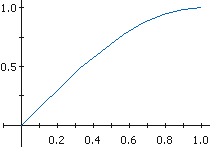
|
|
Quarter Cosine
|
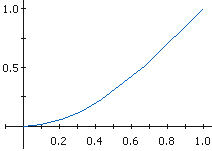
|
|
Half Cosine
|
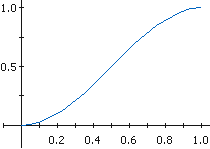
|
|
3-4-5 Polynomial
|

|
|
4-5-6-7 Polynomial
|
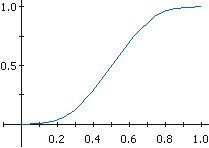
|
|
5-6-7-8-9 Polynomial
|
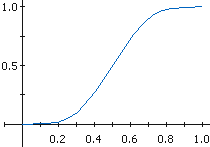
|
|
Cycloidal
|
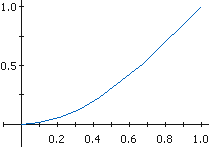
|
|
Quadratic
|
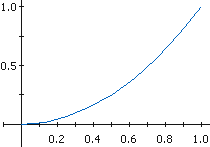
|
|
Linear
|
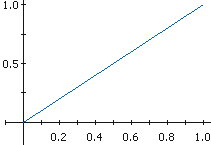
|
See Default Segment Type Function Definitions for default segment type function definitions.
This is the default set of segment type functions. If you define custom segment type functions, the available options might differ.
|
| |
Delete Row |
When selected after right-clicking a table row, deletes the selected row. |
| |
Insert Row Above |
When selected after right-clicking a table row, inserts a row above the selected row. |
Data Points
Defines profile from an interpolated data set as a function of time, cycle angle, or motion study results.
| |
Value (Y) |
Specifies the function dependent variable: - Displacement
- Velocity
- Acceleration
|
| |
Value (Y) for path mate motors |
Specifies the function dependent variable for path mate motors: - Distance Along Path
- Tangential Velocity
- Tangential Acceleration
|
| |
Independent variable (X) |
Specifies the independent variable:
|
| |
Interpolation |
Sets the interpolation method:
|
Cubic spline
|
|
|
Linear
|
|
|
Akima spline
|
|
|
| |
Import Data |
Imports function data points from a .csv file. The independent variable range of the data points is displayed in a single row of the data point table. Click Click to add row after importing to add new data points to the function definition. |
| |
Click to add row |
Adds a new row to specify a new (X, Y) pair. |
| |
Delete Row |
When selected after right-clicking a table row, deletes the selected row. |
| |
Insert Row Above |
When selected after right-clicking a table row, inserts a row above the selected row. |
| |
Expand |
When selected after right-clicking a table row corresponding to imported data, lists each (X, Y) pair in its own row. You cannot undo this operation.
|
Expression
Defines profile as mathematical expression of time, cycle angle, or motion study results.
| |
Value (Y) |
Specifies the function dependent variable: - Displacement
- Velocity
- Acceleration
|
| |
Value (Y) for path mate motors |
Specifies the function dependent variable for path mate motors: - Distance Along Path
- Tangential Velocity
- Tangential Acceleration
|
| |
Minimum X value |
Specifies the smallest X value in the independent variable range. For X values between zero and Minimum X value, the function value is zero.
|
| |
Maximum X value |
Specifies the largest X value in the independent variable range. |
| |
Expression Definition |
Defines the expression from the functions, variables, constants, or results you enter. You can combine expression elements with ordinary mathematical operators: +, -, *, / and **.
|
| |
Expression Elements |
Lists categories of elements you can include in expressions:
|
Mathematical Functions
|
Provides functions you can select to help build expressions. For each function you select, you must enter one or more function arguments in the Expression Definition area.
You can combine expression elements with ordinary mathematical operators: +, -, *, / and **.
|
|
Variables and Constants
|
- Time. Defines time as an independent variable.
- Cycle Angle. Defines cycle angle as an independent variable.
- PI
- RTOD. Specifies the radians-to-degrees conversion constant.
- DTOR. Specifies the degrees-to-radians conversion constant.
|
|
Motion Study Results
|
Displays results you can include as independent variables in expressions.
|
|
 |
|
Indicates a valid expression. |
 |
|
Indicates an incorrect expression. |